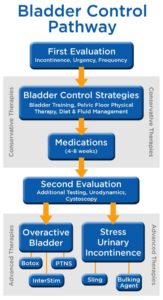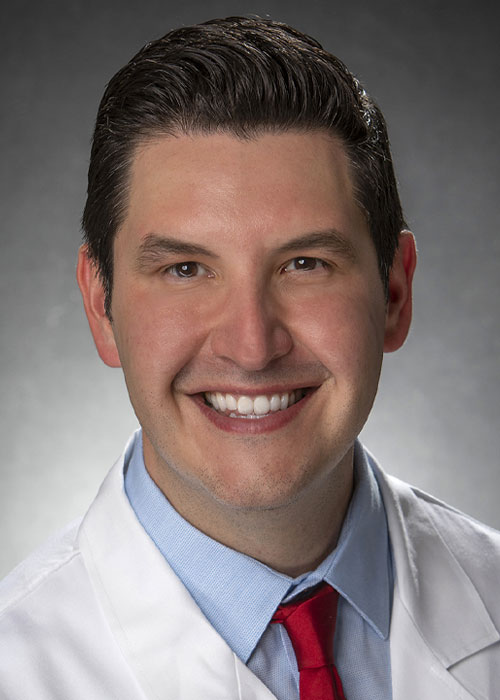Overactive Bladder
When you have overactive bladder (OAB), your bladder muscles contract too soon. This gives you a strong sudden need to urinate, even when your bladder isn’t full and creates a “gotta go” sensation. You may also have urge urinary incontinence, meaning you leak urine after you have a sudden urge:
As we age, women and men are more at risk of developing overactive bladder, but it’s not a normal part of aging. Talk to your doctor if you’re experiencing any of the following symptoms:
- strong, sudden urges to urinate
- urinating more than 8 times in 24 hours or waking more than 2 times at night to urinate
- not making it to the bathroom in time
- accidental loss of urine in small or large amounts
Overactive Bladder Testing and Treatment
Overactive Bladder Testing
To diagnose OAB and rule out other conditions, your doctor will do a physical exam and discuss your medical history. In addition, a urologist may order the following tests:
- Urinalysis: a sample of your urine to check for infection, blood or other abnormalities (read more…)
- Urodynamic Testing: a series of tests to measure how well your bladder and urethra function (read more…)
Overactive Bladder Treatment
There are many treatment options for overactive bladder. Most people who are treated see an improvement in their symptoms.
Overactive Bladder Treatment
There are many OAB treatment options. Most people who are treated see an improvement in their symptoms.

View the OAB Treatment Pathway.
- Lifestyle Changes: Adjusting activities that make your OAB symptoms worse – such as eating or drinking caffeine or acidic foods – is the first step in treating OAB. (Review the list of potential bladder irritants)
- Bladder Retraining: Through retraining, you learn to resist the urge to go and increase control over how much urine your bladder can hold. Your doctor can set up a retraining schedule for you.
- Pelvic Floor Physical Therapy: Working with a physical therapist or health care provider who specializes in the pelvic floor muscles can help you learn to strengthen and control the muscles involved in urination. One type of exercise to strengthen the pelvic floor is called a Kegel.
- Medications: These relieve the frequent urges by blocking the nerve that signals your bladder to contract too soon.
Additional OAB Treatment Options
Sometimes, medications don’t work or have undesireable side effects. Here are additional OAB therapies you should discuss with your doctor if OAB continues to negatively impact your quality of life:
- Botox for OAB – uses botulinum toxin (BOTOX®) in the bladder muscle can keep it from contracting too often. This popular treatment provides relief for 6-9 months. Read More…
- Axonics for OAB – uses gentle nerve stimulation thought to normalize bladder-brain communication. Read More…
- InterStim for OAB – uses gentle nerve stimulation thought to normalize bladder-brain communication. Read More…
- PTNS for OAB – Percutaneous Tibial Nerve Stimulation, or PTNS, is a non-surgical treatment for OAB. PTNS can help reduce OAB symptoms by relaxing the bladder muscles. Read More…
Frequently Asked Questions
What is considered a normal number of times to urinate in a day?
The number of times you need to urinate each day varies based on your fluid intake, but generally, you should urinate no more than 8 times in 24 hours.
Will limiting the amount of water I drink help my overactive bladder?
While it may seem like a good idea, limiting fluids can cause your urine to be more concentrated and irritate your bladder, making you have to urinate more often.
OAB Document Library
Below are downloadable OAB forms your provider may need you to bring to your appointment.










